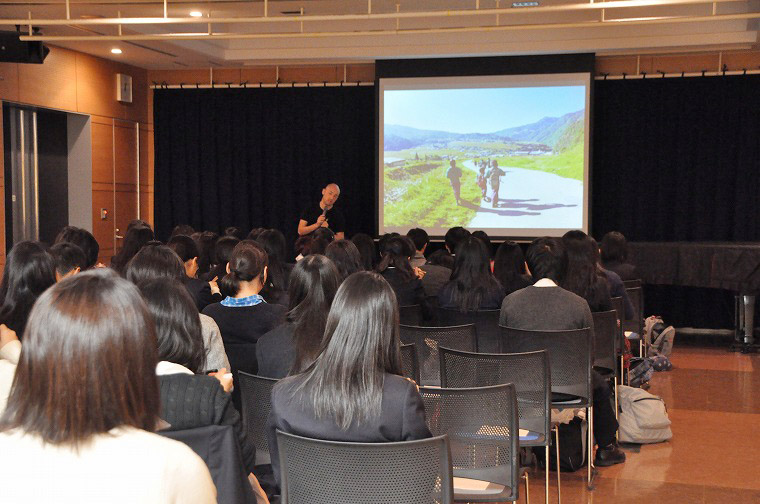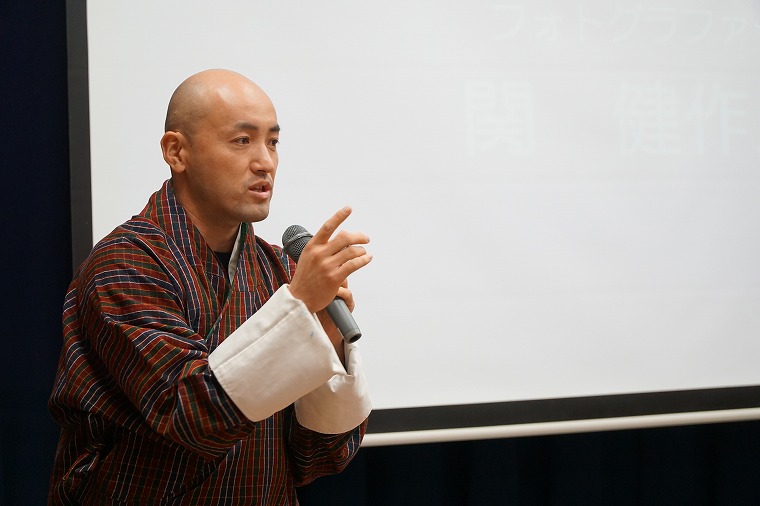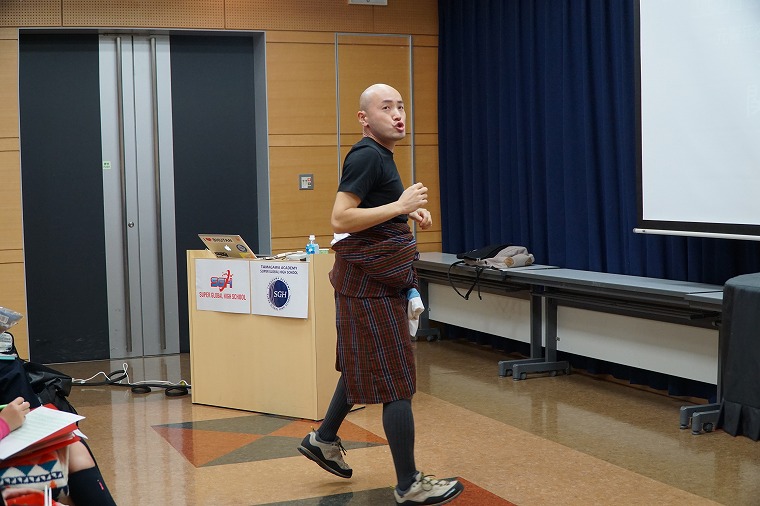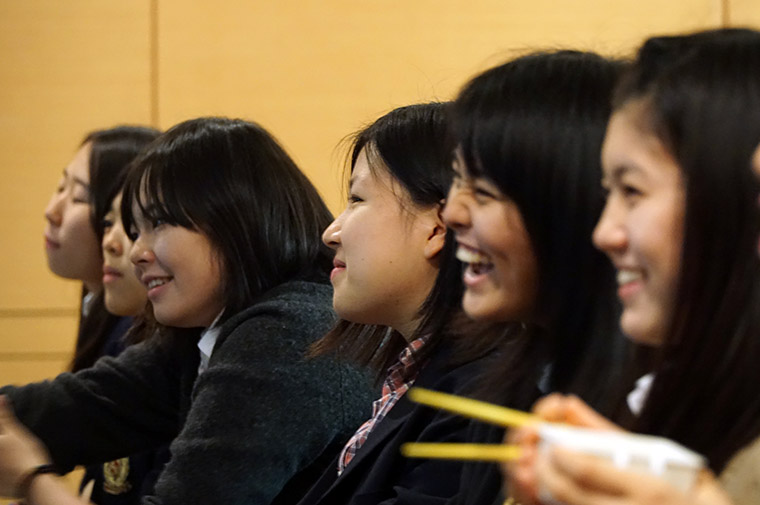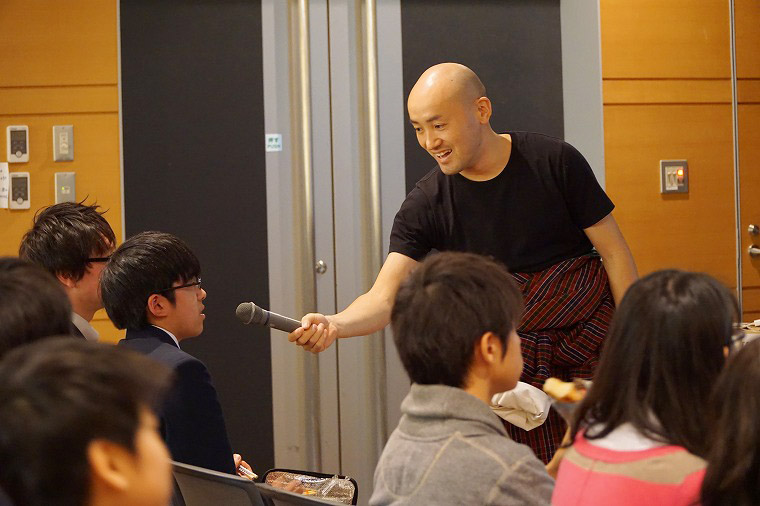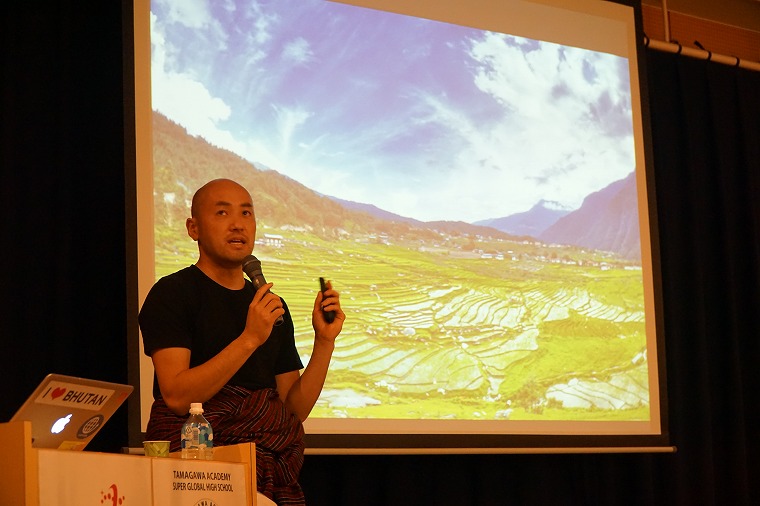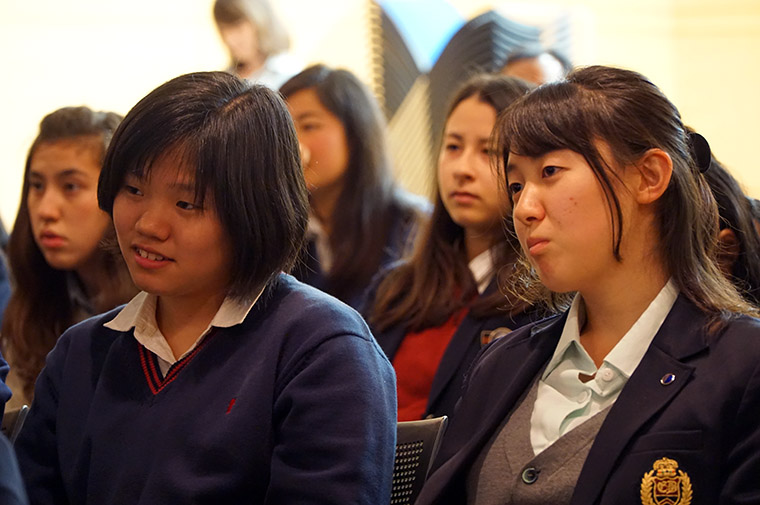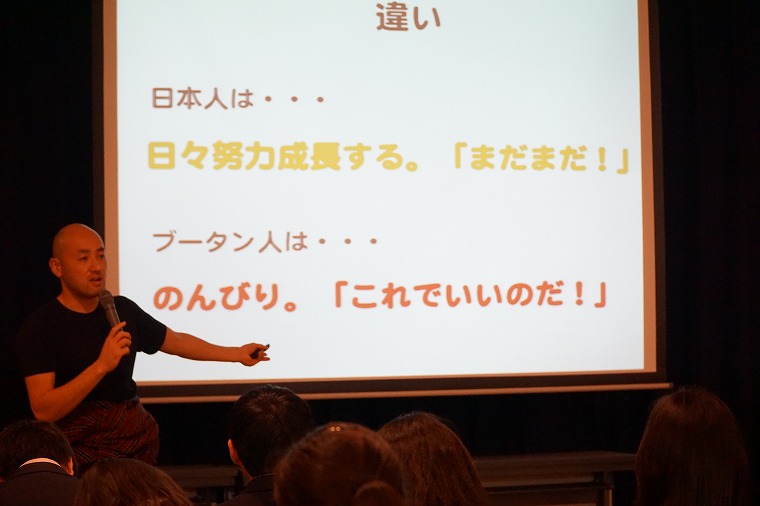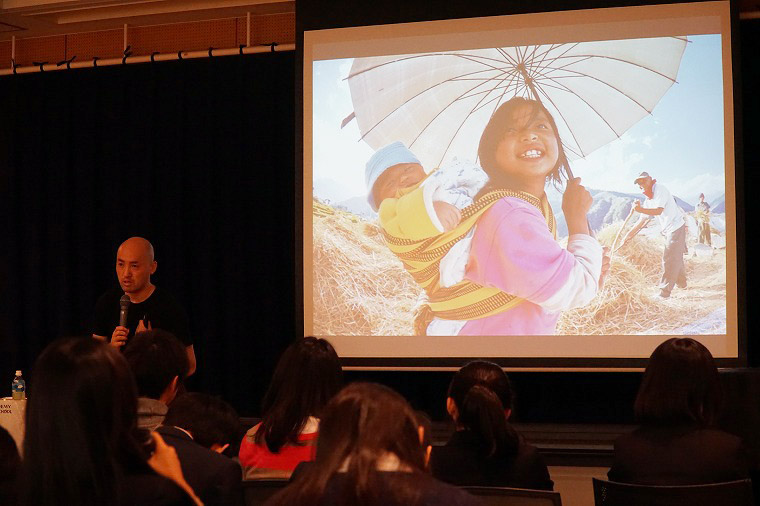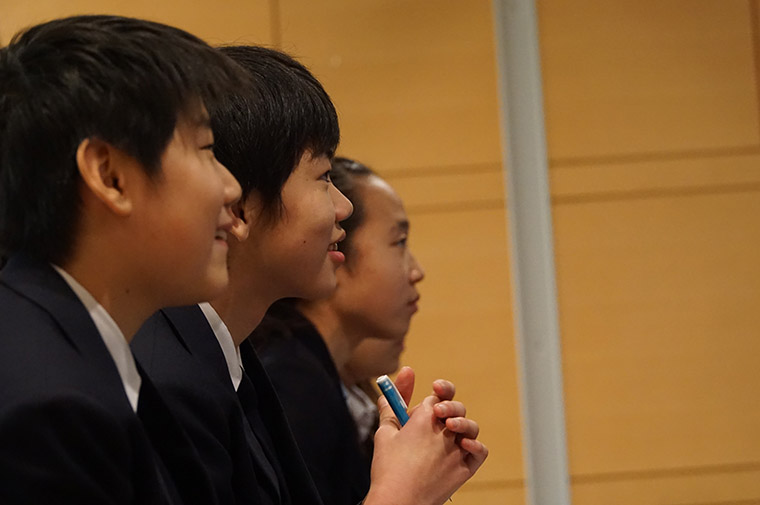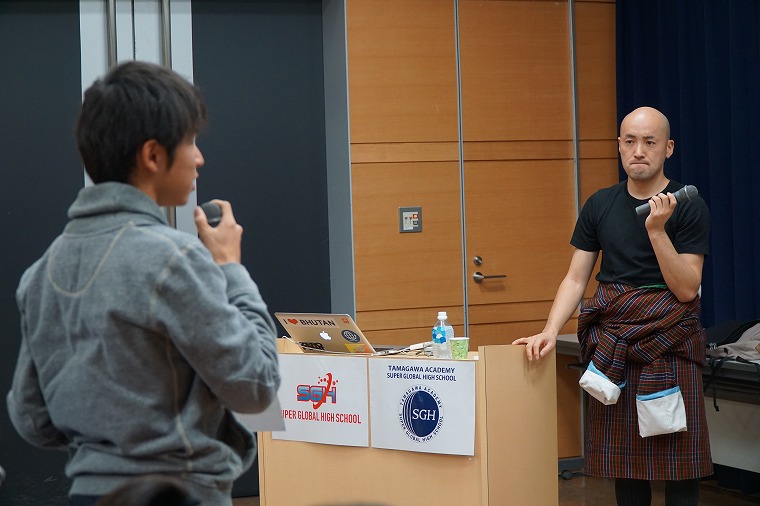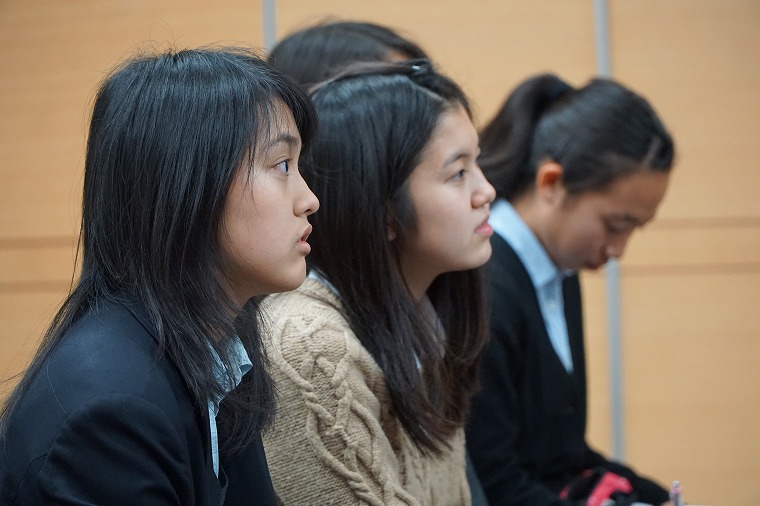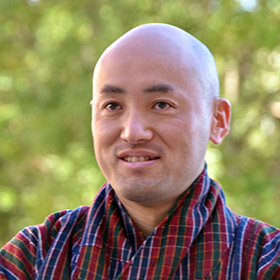The 10th lecture, from the Global Carrier Lecture Series, was given by Kensaku Seki, a photographer.
Mr. Seki had been dispatched to Bhutan as a member of Japan Overseas Cooperation Volunteers (JOCV) from 2007 to 2010. Since returning to Japan, he has worked as a photographer. He talked about what motivated him to go to Bhutan as a physical education teacher, about his experiences and feelings there, and about his current job, as a photographer.
About 70 students attended the lecture that was held during lunchtime. Mr. Seki appeared, dressed in traditional Bhutan clothes.
He showed a short video presentation at the beginning. When he first arrived in Bhutan, he could not speak English at all. One local people asked, “What did a person, who can’t speak English, come here for?” He desperately wanted to learn how to communicate with the local people. It was like shadowboxing with sound effects, where he became good at imitating what he heard. His actions and sound simulated a real boxing scene, and cheers arose from the students, who yelled “Amazing!”
Next, he asked the students questions and showed them pictures one after another “Give me your first impression.” Doing so created a familial atmosphere in the hall which made it possible for students to enjoy them selves.
Mr. Seki spent his school days as a track and field athlete, and during high school he trained every day, believing that “Dreams come true if I never give up.” However, while at university, after seeing other athletes take part in international competitions or the Olympics, he realized that he was not talented enough.
When he gave up track and field, which he had devoted himself to for so long, he felt depressed. Then, he watched a TV variety show that introduced Bhutan. He became moved after seeing the lively face of a woman, who was teaching PE there, and it was then when he decided he would apply for the JOCV volunteer program. He started his Bhutan life in 2007.
He told the students about Bhutan`s food culture, traditional clothes, and showed pictures of the way to his post in Trasiyangtse, which was a three-day drive from Thimphu, the capital of Bhutan. The students were interested in seeing another country that was very different from Japan.
When he started working there, he found that PE was not recognized as a part of education. Therefore, he decided to first show that PE was for enjoyment. No gymnastics equipment was there. He thought, “What can I do? What can I do?” and came up with a lot of ideas. He made equipment from bamboo or rubbish with children, and seeing their smiles, gave him fulfillment.
However, on the other hand, he couldn’t accept the local people’s laid-back life-style and temperament, which made him feeling frustrated and bitter from loneliness. Then, he fell in a valley and got severely injured. During therapy in Japan, the children’s smiles appeared in his dreams every night. He reconfirmed his desire again, and after two months, he resumed his work in Bhutan.
After that, he made an effort to take on the local people’s attitude and pace, and worked hard to learn, not English, but the local language. Three years later he was interviewed by a TV program as a Bhutanized Japanese.
The more he knew about Bhutan, the more the local people accepted him. He said, “I treated them, thinking that ‘I should stand in their place, and teach PE together with them.’ Then, even what had gone wrong went well.” Based on his experience, he firmly believed that in order to improve international understanding, it was important to understand others, to actually experience something and to enjoy the differences.
After he returned to Japan, he worked as an elementary school teacher for one year. Then, despite no experience at all, he decided to become a photographer in order to make a living of “building something from scratch” and “telling others something” that he loves to do the most.
By turning the smiles of children who he met overseas into his driving force, he has been expanding his working field. The students found his way of thinking and living life appealing.
In the question and answer session, a student asked him, “Do Bhutan people have what we should emulate?” He answered, “The value that we should keep is an attitude of gratitude toward what we just have now.” Being a person who knows Bhutan as well as himself was quite persuasive.
For 30 minutes, the students watched the video of Bhutan and learned from it, about human potentialities from the power of experience.




